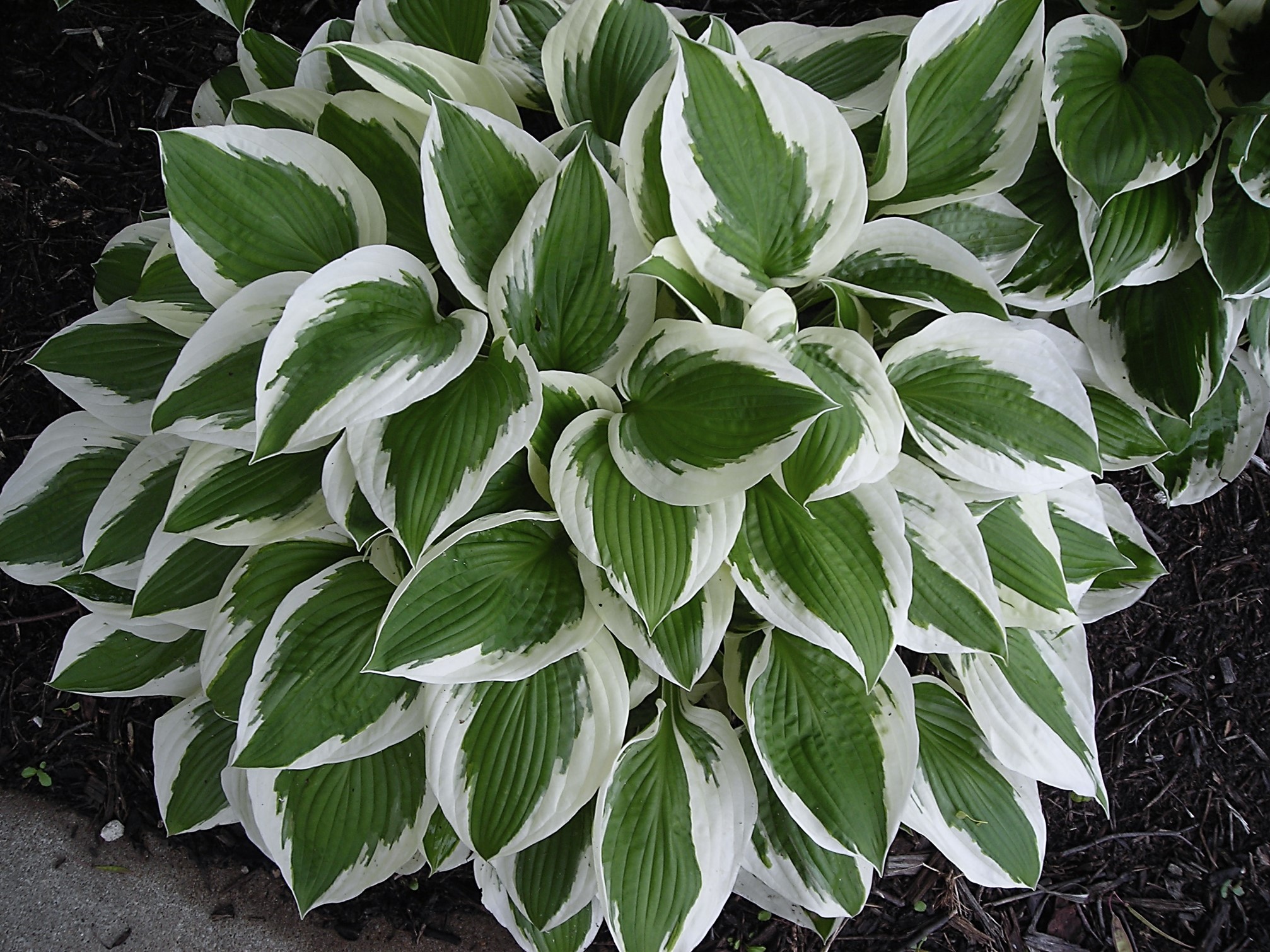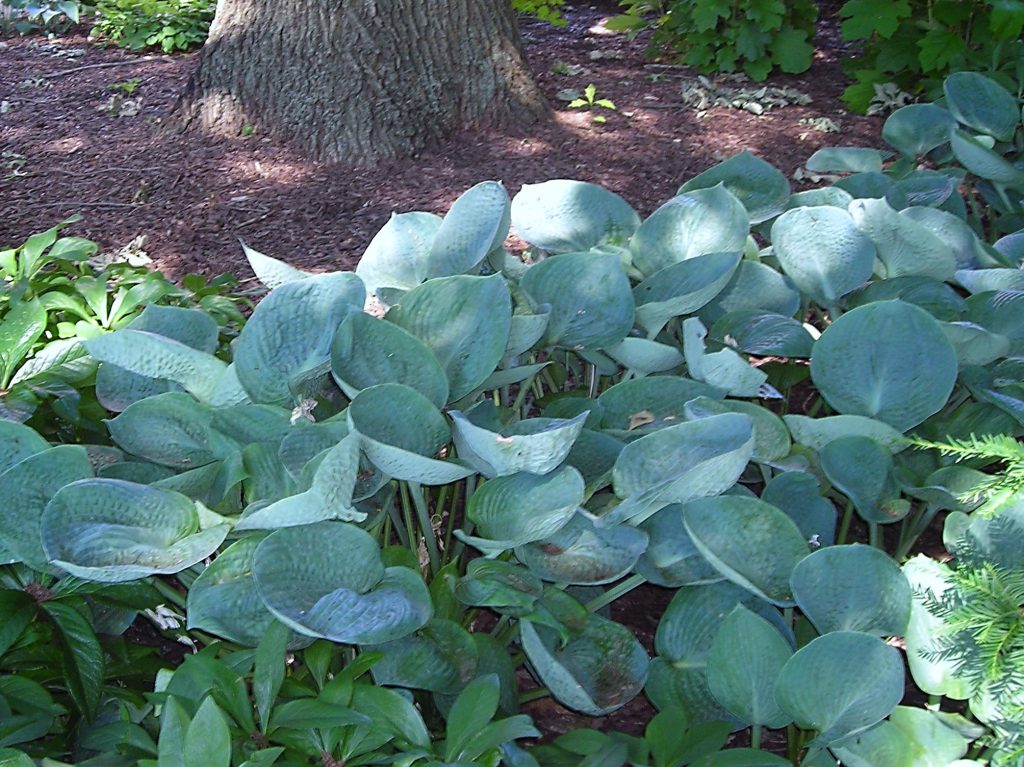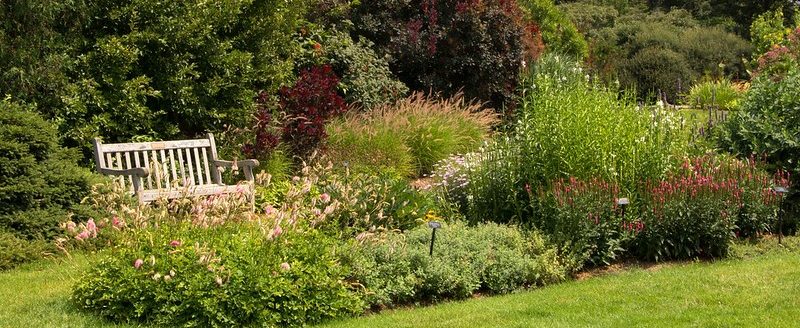Hosta steps out of the shadows in 2024

Shining new light on a shady character
Perhaps no plant brightens a shady area more than hosta, said University of Missouri Extension horticulturist David Trinklein. The hardy perennial that thrives in shade is low-maintenance and easy to grow.
“It is little wonder, then, why hosta was selected by the National Garden Bureau as its Perennial of the Year for 2024,” said Trinklein. Its lush foliage comes in a variety of sizes, shapes, colors and variegation. Hosta is one of a few plants that brings attractive color to the shadiest of garden corners.

Horticulturists estimate there are more than 4,000 cultivars of hostas, he said. They range from miniatures such as “Baby Bunting” and “Tiny Tears,” which are several inches in diameter when mature, to giants such as “Sum and Substance” and “Emperor Wu,” with a height and spread of 48 inches.
Hostas usually fall into one of five categories based on height or leaf color, Trinklein said. These are dwarf, edger, ground cover, background and specimen-hostas of any height with colorful or unique leaves.
Leaf color varies between solid colors of green, blue and yellow, or variegated in any combination of these colors. Most variegated cultivars bear dark leaves with light or colored edges. A few cultivars are viridescent, changing from lighter to darker shades during the growing season. Others are lutescent and change from green to yellow. A very few change from yellow to white, a trait known as albescence.
Hostas also can be classified according to their leaf shape (strap, lance, egg, heart and circular) and leaf surface (flat, rugose, cupped-rugose, wavy undulate, contorted, piecrust or furrowed).
Like daylilies, hostas bear a compound inflorescence known as a scape. Individual flowers on the spike are lavender or white, depending upon cultivar. Some flowers are delightfully fragrant, adding further appeal to this attractive plant, said Trinklein.
Although most consider hosta a shade plant, relatively few cultivars thrive in deep, heavy shade. Most prefer several hours of morning sun followed by afternoon shade, or broken patches of dappled sunlight. Hostas’ aggressive roots compete well with the roots of most tree species.
Generally, blue-leafed cultivars need a shadier exposure. Green- and yellow-leafed cultivars can tolerate more sun. Most sun-tolerant cultivars will exhibit some leaf-edge burn if exposed to afternoon sun and Midwestern summer heat.
Some hosta cultivars take years to develop into a mature clump. Therefore, good soil preparation is a sound investment. Hostas prefer rich loam soil high in organic matter and slightly acidic. Good drainage also is important. Mix about 4 inches of organic matter deeply into the soil to prepare average soil. Well-rotted manure, compost, leaf mold or peat are good sources of organic matter. Plant in a 12-inch-deep hole that is 1 ½ times the cultivar’s mature diameter.
Divide dormant hostas for more plants, or buy established plants in nursery containers. To plant, remove the hosta from its container and free any tangled roots. Put the plant in the hole so that soil covers the roots at the same level as they were in the nursery container. Remember that soil settles when watered. If planting dormant divisions, soak the roots in water for about 30 minutes before planting. Always water thoroughly after planting.
Gardening experts disagree about the need to fertilize hostas. Some insist that most garden soils contain sufficient nutrients, making additional fertilizer unnecessary. Others maintain that hostas need more fertilizer. This group says to add a granular, complete fertilizer such as 12-12-12 or 5-10-5 early in spring, followed by two more applications about six weeks apart. Apply according to label directions and consider the cultivar’s stature and vigor. Do not fertilize hostas after mid-July. This could stimulate late-season growth and prevent the plant from hardening for winter, Trinklein said.
Hostas need about 1 ½ inches of water per week during summer. Burned leaf tips and drooping leaves are a telltale sign of too little water. If extra irrigation is required, water early in the morning to allow leaves to dry quickly.
Increase your hosta numbers by dividing the clump early in the spring when the shoots start to emerge from the soil. Most cultivars need about five years of undisturbed growth to establish the clump.
Slugs and snails typically chew small, round holes to feed on the leaves of plants. They leave a dried trail of slime as they move from one spot to another. Control slugs and snails by using poison baits containing measurol, metaldehyde or iron phosphate. Place pans filled with beer in the garden. Pests will crawl into the pan and drown. Deer also love hostas. Repellents, electrical fences, guard dogs and motion detectors control deer, to greater or lesser effectiveness.
Other than foliar nematodes, hostas are relatively disease-free. Hosta virus X (HVX) is a relatively new virus that has been getting a lot of publicity as of late, said Trinklein. Cultivars with light-colored leaves may show blue or green markings that usually follow the vein of the leaf into the surrounding tissue. This results in a mottled appearance. Leaves also may look lumpy or puckered.
Symptoms on cultivars with dark-colored leaves are harder to detect and may appear as light-colored mottling instead of colored streaks. HVX spreads by mechanically transferring from an infected plant to a healthy one, especially during propagation. There is no cure, and gardeners should rogue out infected plants, Trinklein said.
It is difficult to choose which of the 4,000 hosta cultivars to plant. Look for a cultivar that has won an award given by the American Hosta Society or the American Hosta Growers’ Hosta of the Year Award, said Trinklein. “Once considered a ‘green filler’ for shady areas, hostas are now the stars of shady landscapes,” he said.
Learn more about hostas on the American Hosta Society website at www.hosta.org.
COVER PHOTO: Hostas, the stars of shady landscapes, earned the National Garden Bureau’s nod as Perennial of the Year for 2024. Photo by David Trinklein.



